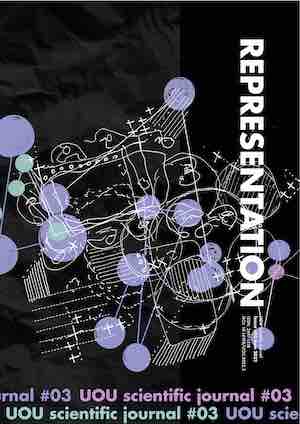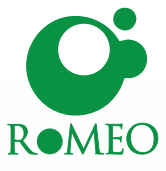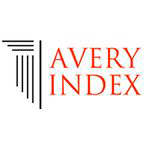Visionary Representation as an Anomaly: Indeterminate Trajectories in Early Republican Turkey’s Art and Architecture Environment
Abstract
This study aims to discuss the Turkish context of the critical-creative visionary/avant-garde attitude, which is handled through various approaches, productions, actors and discourses in the literature of art and architecture theory. It explores through which local representations the idea of the future and the new, possible intercultural interaction, can be read. Within this extensive proposition, "indeterminate trajectories" built on a set of assumptions/intuitions rather than a top-down approach can make potential relationships and interactions visible regarding the concepts and context at the center of the discussion; It is suggested that the definition of the visionary at a general dimension, together with the role of representation and criticism, can open up some discussions regarding the Turkish context in particular. The content and method of the research are constructed as a whole, and the points taken by the themes shaped by the predicted interactions and associations are mapped. This text has been constructed as a part of a large research/“area of concentration”, and within the context in question, "avant-garde", another concept which the concept of "visionary" interacts, is considered as the scope of this study. In this context, together with the avant-garde theme, the Early Republican Period, the contemporaneous of the historical avant-garde in Europe, defines a temporal trajectory for the discussion, while the booklet Güzelleşen İstanbul (Beautifying istanbul) presents a visual-imaginary trajectory.
Funding
This paper is prepared in the “Visionary Design and Architecture” Graduate Course instructed by Prof. Dr. Ayşe Şentürer in ITU Institute of Science, Architectural Design Program. I would like to thank Prof. Dr. Ayşe Şentürer.Downloads
References
BETSKY, Aaron. Experimental Architecture. Out There: Architecture beyond Building (Volume 3). New York: Rizzoli, 2008. ISBN 978-88-317-9447
BOYAR, Ali Sami. Sanat Varlığımızda Resmin Yeri. In: Ülkü. 1934, issue 5, p. 398.
BOZDOĞAN, Sibel. Modernism and nation building: Turkish architectural culture in the early republic. Seattle: University of Washington Press, 2001. ISBN 0-295-98110-5
BÜRGER, Peter. Theory of the Avant-Garde (M. Shaw Trans.). Minneapolis: University of Minnesota Press, 1984. ISBN 0-7190-1453-0
COLLINS, Georg. The Visionary Tradition in Architecture. In: : The Metropolitan Museum of Art Bulletin. 1968, issue 26, pp. 310-321.
DAVER, Abidin, Salih GÜNAY, Mazhar Nazım RESMOR. Güzelleşen İstanbul XX. Yıl. İstanbul: İstanbul Municipality Press, 1943.
DE CERTEAU, Michel. The Practice of Everyday Life (S. Rendall Trans.). Berkeley: University of California Press, 1984. ISBN 0-520-23699-8
FOSTER, Hal. The Return of The Real : The Avant-garde at The End of The Century. Cambridge: MIT Press, 1996. ISBN 0-262-06187-2
GADANHO, Pedro. Utopia/Dystopia: A Paradigm Shift in Art and Architecture, Lisbon: EDP & Mousse Publishing, 2017. ISBN 8867492802
GOODMAN, Donna. A History of the Future. New York: The Monacelli Press, 2008. ISBN 978-1-58093-207-3
NALBANTOĞLU, Gülsüm Baydar. The Professionalization of the Ottoman-Turkish Architect (PhD Thesis). University of California Press, Berkeley, 1989.
PATT, Trevor. The Collective Image: Form, Figure and the Future. In: CHOI, Esther & TROTTER, Marika. Architecture at the Edge of Everything Else, 2010, 139–148. ISBN 9780262014793
SAID, Edward. Beginnings: Intention and Method. New York: Columbia University Press, 1985. ISBN 9780801820854.
SPILLER, Neil. Visionary Architecture: Blueprints of the Modern Imagination. Londra: Thames & Hudson, 2008. ISBN 9780500342268
WITZGALL, Susanne, Kerstin STAKEMEIER. The Present of the Future. Zurich-Berlin: Diaphanes, 2017. ISBN 9783037349861
Downloads
Published
How to Cite
Issue
Section
License
Copyright (c) 2022 Emirhan Kurtuluş

This work is licensed under a Creative Commons Attribution 4.0 International License.
The authors keep their rights upon their work, although they transfer, in a non-exclusive way, the rights of exploitation (reproduction, publication, distribution, public dissemination and presentation) to the Journal. The authors are, therefore, free to enter additional, separate contracts for the non-exclusive distribution of the version of the work published in the Journal (for instance, by hosting in an institutional repository or publication in a book), provided credit is given that the work was initially published in this journal. The works are published under a Creative Commons Attribution 4.0 (CC BY 4.0) license.












